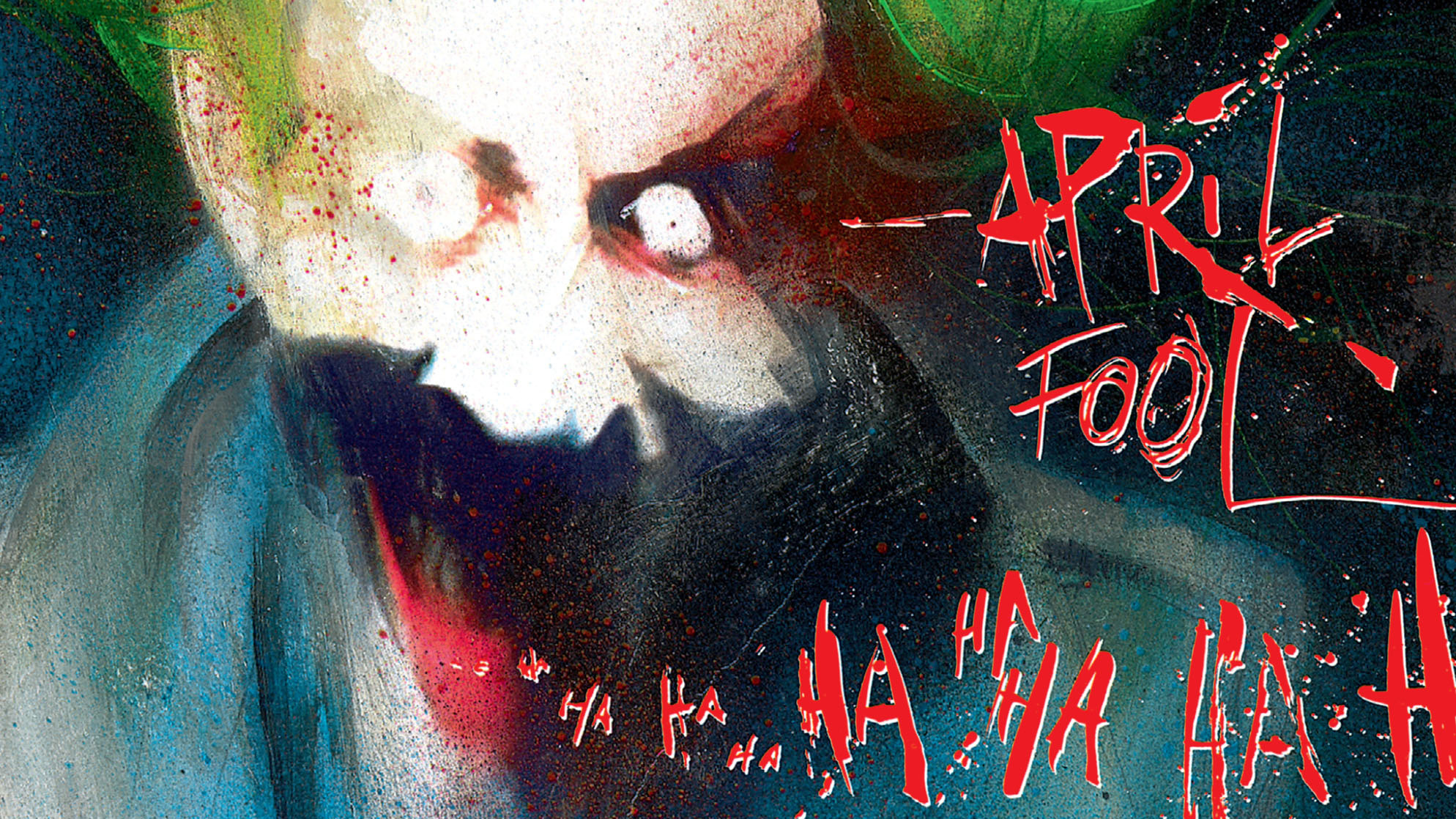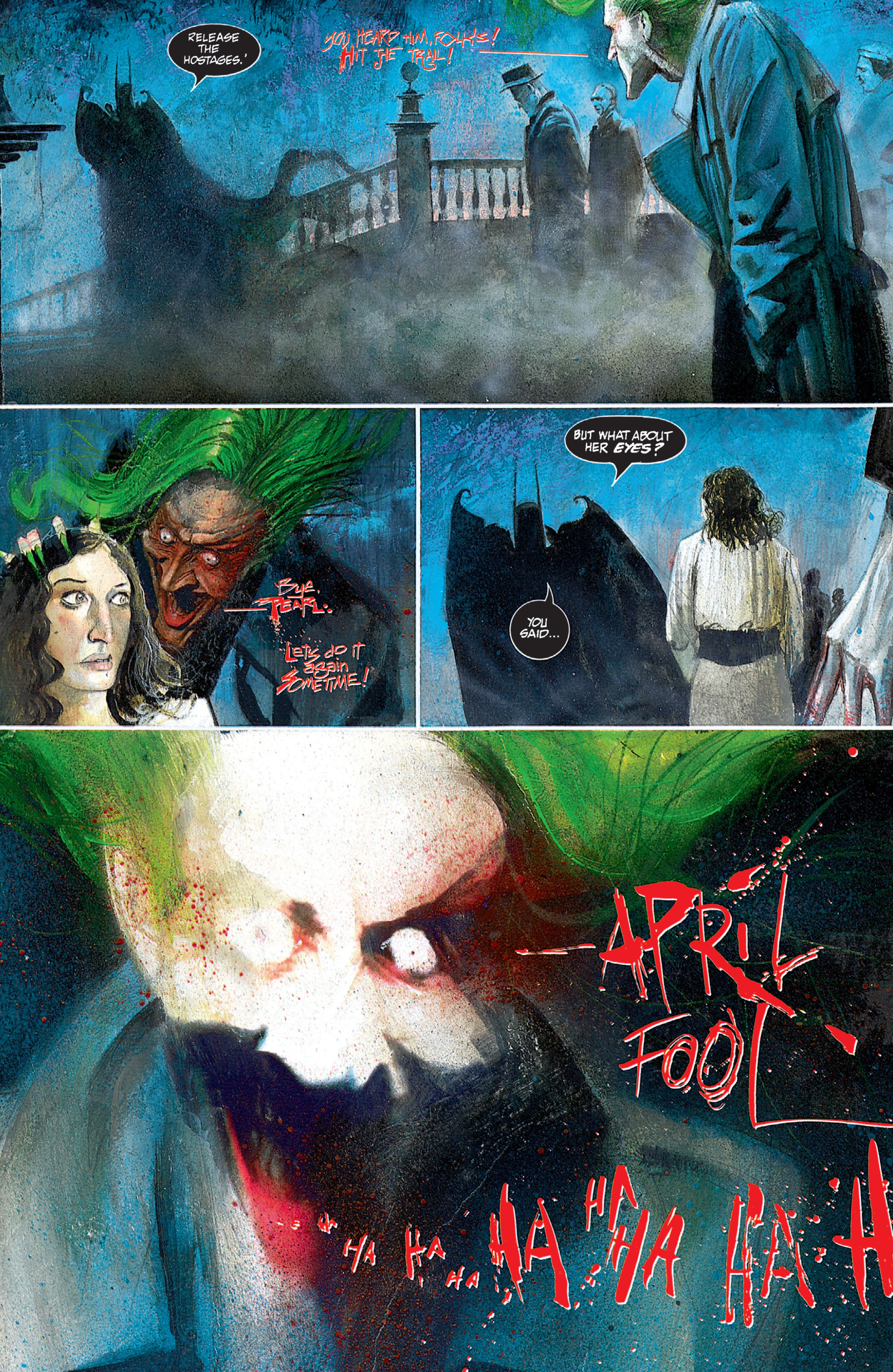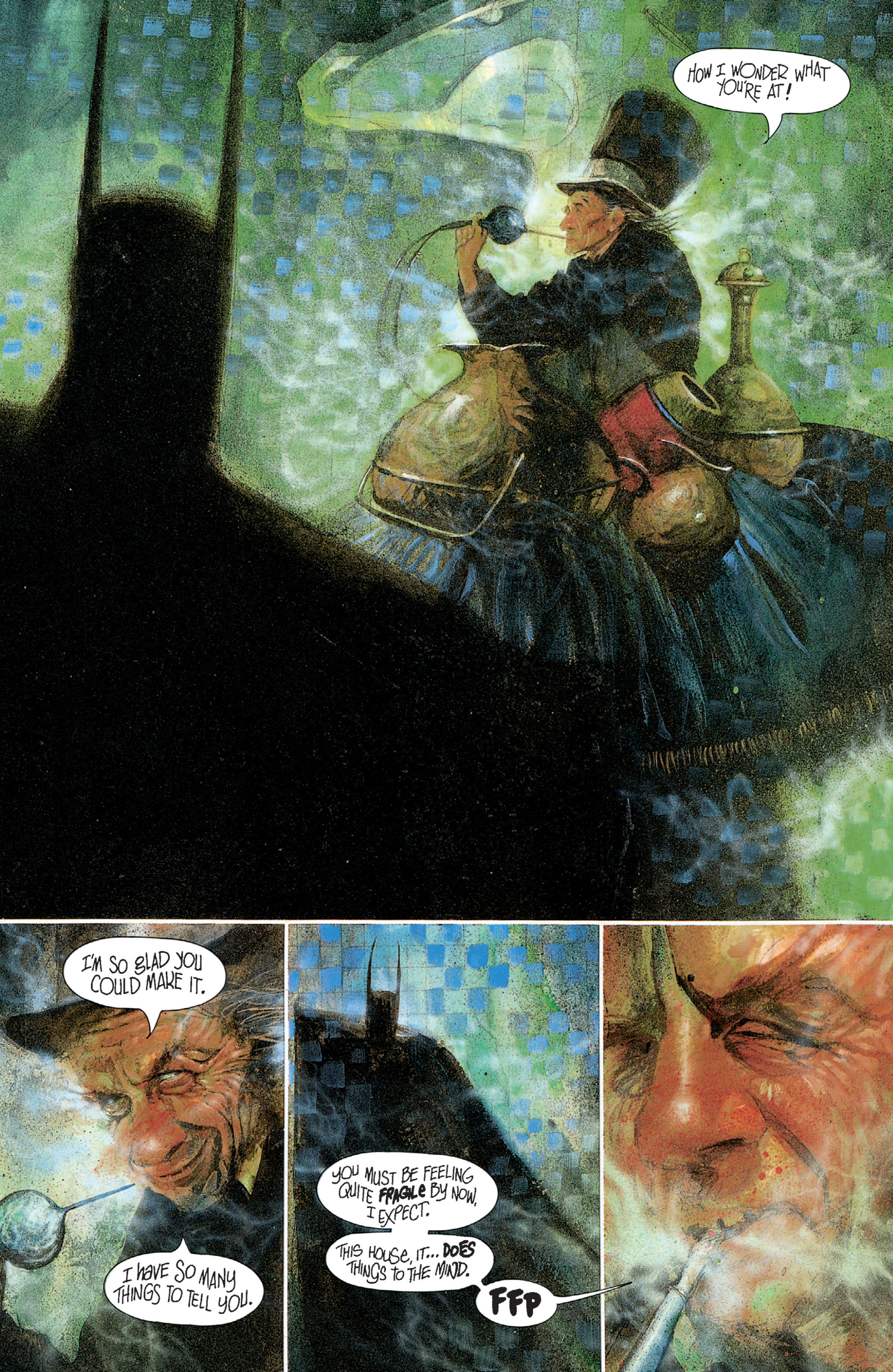There has never been a Batman comic quite as haunting as Arkham Asylum
Looking back on Morrison and McKean's beautiful nightmare

Thanks to lovely work by writer/artist Christian Ward, the current Batman: City of Madness series is another example of the Dark Knight delving into horror.
As a sink hole opens up in Gotham, Batman is forced to visit Two-Face in Arkham. While there he recalls the events of Grant Morrison and Dave McKean's landmark graphic novel, Arkham Asylum: A Serious House on Serious Earth. "Years ago I was forced to spend a night in it," Batman muses to himself. "In my worst moments... I wonder if I perhaps I never left."
Ward is consciously drawing connections between the new City of Madness series and that classic book, as well as throwing in the Court of Owls and a Lovecraftian version of the Dark Knight - the Batman Below. That said, the new series has a long way to go before it can trump Arkham as perhaps the most disturbing Batman comic book of all time.

A lot of that stems from the fact that, from the onset, it's hard to tell how much of Arkham's story is even traditionally "real." And that's not meant in the typical sense, in which some trippy or dream-like effect twists Batman's own perception for a limited time. The story is definitely hallucinatory, but it's because Morrison's specific interpretation here deems Batman's own world and mind to inherently be that way.
Batman, his shoulder armor arched into curled spikes and his suit often appearing like smooth, distended skin across his frame, can barely be considered a reliable narrator in his own life. As many characters and villains point out, it's unclear just how much of Batman's existence is merely a glimpse into his own "madness."
"Sometimes I think the asylum is a head. We're inside a huge head that dreams us all into being," the Mad Hatter pontificates. "Perhaps it's your head, Batman. Arkham is a looking glass. And we are you."

The things that usually stabilize a Batman story - the sense of adventure or Batman's inevitable heroic derring-do - are nowhere to be found here. What little action narrative there is (the inmates at Arkham take the staff hostage and Batman is hunted by them after he arrives) is swallowed up in a broad nightmare.
Get the best comic news, insights, opinions, analysis and more!
This Batman is a being of gritted teeth and self-loathing, a man recognizing that he can't escape Arkham or his own head (or both). And instead of the empathy that he usually lends to his weaker foes, the Caped Crusader here treats them with disgust, as if he's being shown the worst versions of himself and refuses to admit it.
Arkham is laced with religious allegory, tarot imagery and countless references to other "How much of it takes place in the character's head?" stories like Alice in Wonderland and even Psycho.
Much of it, though, is blended into a product of the characters' many obsessions. Anchoring the Batman narrative is the story of Amadeus Arkham, founder of the Asylum and someone who, through multiple tragedies and a childhood warped by trauma, eventually becomes a doomed patient at his own hospital. His quest to "heal" though is much like Batman's attempts to "save" - ultimately ineffectual.
Instead, the growing, terrifying realization seems to be that they're both merely the sun surrounded by orbiting beings who share whatever makes them sick. It's a detail physically brought to life by the pained Clayface, who approaches Batman with arms outstretched: "My skin is sick, Batman. It's rotten and seeping. Only you can help me. I just want to share my disease."
An angry Batman responds by beating him mercilessly.

Dave McKean's art renders the asylum as a maze with no patterns or wider reason. It's a fitting choice, as the book makes it clear that physically exiting the asylum in no way equates to mentally finding your way out. McKean and Morrison's approach to traditional comic book paneling further deepens the reader's "rabbit hole" feeling of being lost. It's all very beautiful, often in a macabre way, and the only character to emerge unscathed is the Joker, who a psychologist states possesses a kind of "super sanity" that allows him to deal with the world.
Or in this case, deal with Batman, the subject of deranged fascination from every character and especially the Joker, who treats him with flirtatious, sadistic glee.
Countless examples of Batman media have asked the question: "Does Batman create his own villains? Does his presence draw them out in some way or inspire them?" Arkham Asylum: A Serious House on a Serious Earth posits that maybe they were already there, figments of Batman's broken mind, lurking in the halls of a place that's more of a home than he'll ever realize.
Arkham Asylum: A Serious House on Serious Earth is out now from DC Comics. Batman: City of Madness #1 is also now available.
The Ten-Eyed Man, The Penny Plunderer, and more! These are the weirdest Batman villains of all time.
Daniel Dockery is a writer for places like Crunchyroll, Polygon, Vulture, WIRED and Paste Magazine. His debut book, Monster Kids: How Pokemon Taught A Generation To Catch Them All, is available wherever books are sold.



